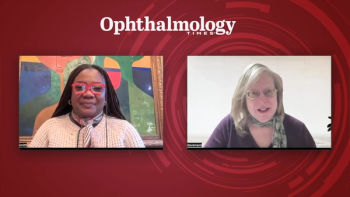
FDA approves trial expansion for dual-optic accommodating IOL
Irvine, CA-Visiogen Inc. has received FDA approval to expand the phase III clinical trial of its dual-optic accommodating IOL (Synchrony) in the United States.
Irvine, CA-Visiogen Inc. has received FDA approval to expand the phase III clinical trial of its dual-optic accommodating IOL (Synchrony) in the United States.
The single-piece silicone lens is being evaluated for safety, effectiveness, and the potential to correct near and intermediate vision without the use of spectacles in patients after cataract surgery. The lens already is approved for use throughout the European Union.
“Full expansion of the clinical trial for [the IOL] is another significant step toward our ultimate goal of approval for use within the United States,” according to Barbara Niksch, vice president of regulatory, quality, and clinical affairs at Visiogen.
The lens unfolds in the eye on insertion via a preloaded injector through a 3.6- to 3.8-mm clear corneal incision. A spring system connects the two optics, a 5.5-mm high-power anterior optic and a 6-mm negative-power posterior optic. The spring action moves the front optic and changes the eye’s focus from near to far. The combination of positive- and negative-powered optics is customized for each patient.
The IOL has been implanted in more than 400 patients worldwide. The company received the European CE mark for the lens in June, allowing the company to expand into post-marketing research studies within Europe.
Newsletter
Don’t miss out—get Ophthalmology Times updates on the latest clinical advancements and expert interviews, straight to your inbox.





